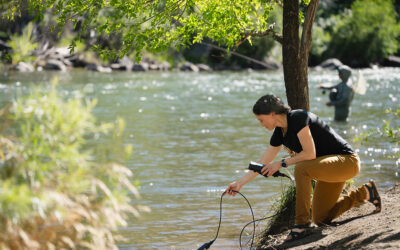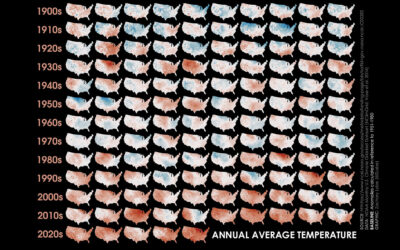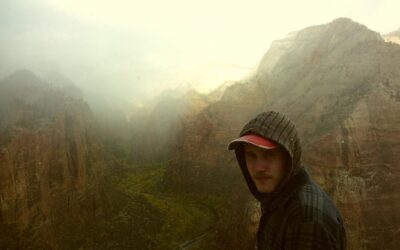Kristin VanderMolen, Ph.D., is an assistant research professor and social scientist with the Division of Atmospheric Sciences at the Desert Research Institute in Reno. She grew up in northern California, and holds a bachelor’s degree in Spanish from Humboldt State University, a Master’s degree in Latin American Studies from the Universidad Andina Simón Bolívar in Quito, Ecuador, and a Ph.D. in environmental anthropology from the University of Georgia. Kristin has been a member of the DRI community since 2016, when she came to DRI for a postdoctoral position. In her free time, she enjoys spending time outdoors – road cycling, hiking, and snowshoeing in the Sierras.
DRI: What do you do here at DRI?
KV: I see my job in two parts. One is that I do purely social sciences research. For example, right now I’m working with the National Park Service at Pipe Spring National Monument in northern Arizona to do a series of oral history interviews with tribal communities and the descendants of early pioneers. Together, those groups have inhabited the area surrounding the monument for a very long time, and NPS wants to build out its oral history archives with their knowledge, experience, and stories. They’ll use that information to help inform the park’s interpretation and management.
The other main area that I work in is to provide social science support to physical scientists such as the climatologists in DRI’s Western Regional Climate Center when their work applies to land and natural resource management. On these projects, I’m often liaising between the researchers and management professionals. I’m also evaluating their research processes or products to help ensure that the results are useful to management.
DRI: What is the importance or value of integrating social science work with other types of scientific research? What can a social scientist bring to the table?
KV: The social sciences have a lot to offer theoretically and methodologically, as well as a different perspective. They also have a lot to offer in practical application. For example, over the last several years, there has been a proliferation of climate-related decision support tools intended for use in land and natural resource management, but in many cases, researchers have produced those tools without end-user feedback. When I first came to DRI as a postdoc, I worked on a project with Tamara Wall where we conducted a multi-stage or “developmental” evaluation of a web interface that provides managers access to climate data and analysis tools. The results emphasized the need to involve end-users from the start and for evaluation to be embedded throughout the development of tools like this. So, as social scientists, we can make evaluation a part of the research process to help ensure that research products are useful to the intended users.
DRI: We understand that you’re involved with an interesting project related to heat related illnesses. Can you tell us about that?
KV: It’s a project with colleagues here at DRI that looks at the messaging about the health impacts of extreme heat and heat waves on vulnerable populations in southern California and northwestern Mexico. The impacts of extreme heat and heat waves on human health can be significant, but heat consistently ranks of little concern to the public in comparison to other climate-related hazards.
So this is an interdisciplinary project, and we’re using a “vulnerability mapping” approach that combines past and projected trends in extreme heat and heat waves with data on cases of heat-related illness and heat-related deaths to identify vulnerable populations in those areas. We’re then doing focus groups with members of those populations to evaluate current heat warning messaging, like from the National Weather Service and public health entities in the U.S. and Mexico. Specifically, we are interested in understanding what knowledge those populations have about extreme heat and heat waves and the impacts to human health, whether they receive messaging, whether they do or do not take recommended protective actions and why. We’re doing this in the interest of helping those messaging agencies to increase the effectiveness of their communications by better targeting them both geographically and socioculturally.
DRI: How did you become interested in this line of work?
KV: I happened upon a notice for a postdoc position within the Western Regional Climate Center where they were looking for someone with a social science background to work in an applied interdisciplinary setting on land and natural resource management issues. I had already been working in such a setting in agricultural research and knew that I liked it, because as much as I love anthropology, I also enjoy learning about other disciplines and what other people do. So, there was a lot of appeal for me in the opportunity to work in an interdisciplinary setting on purposeful research—research focused on environmental problem solving, or now in the case of the heat-health project, on supporting activities to help safeguard human health.


